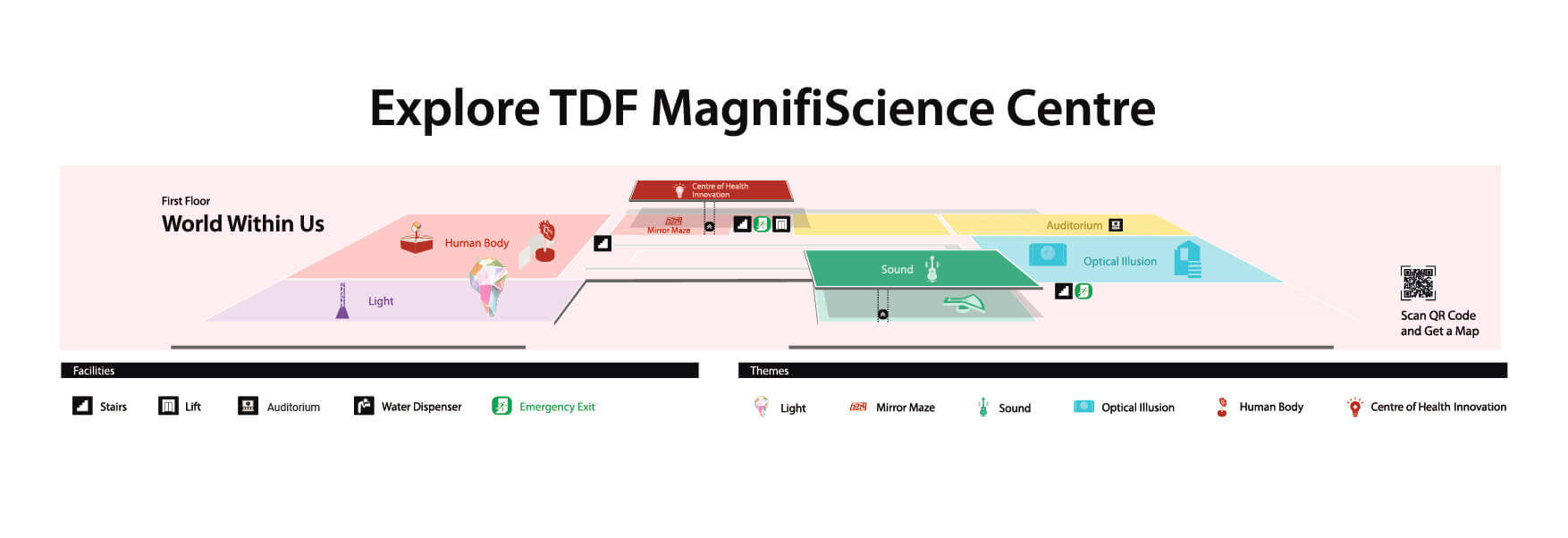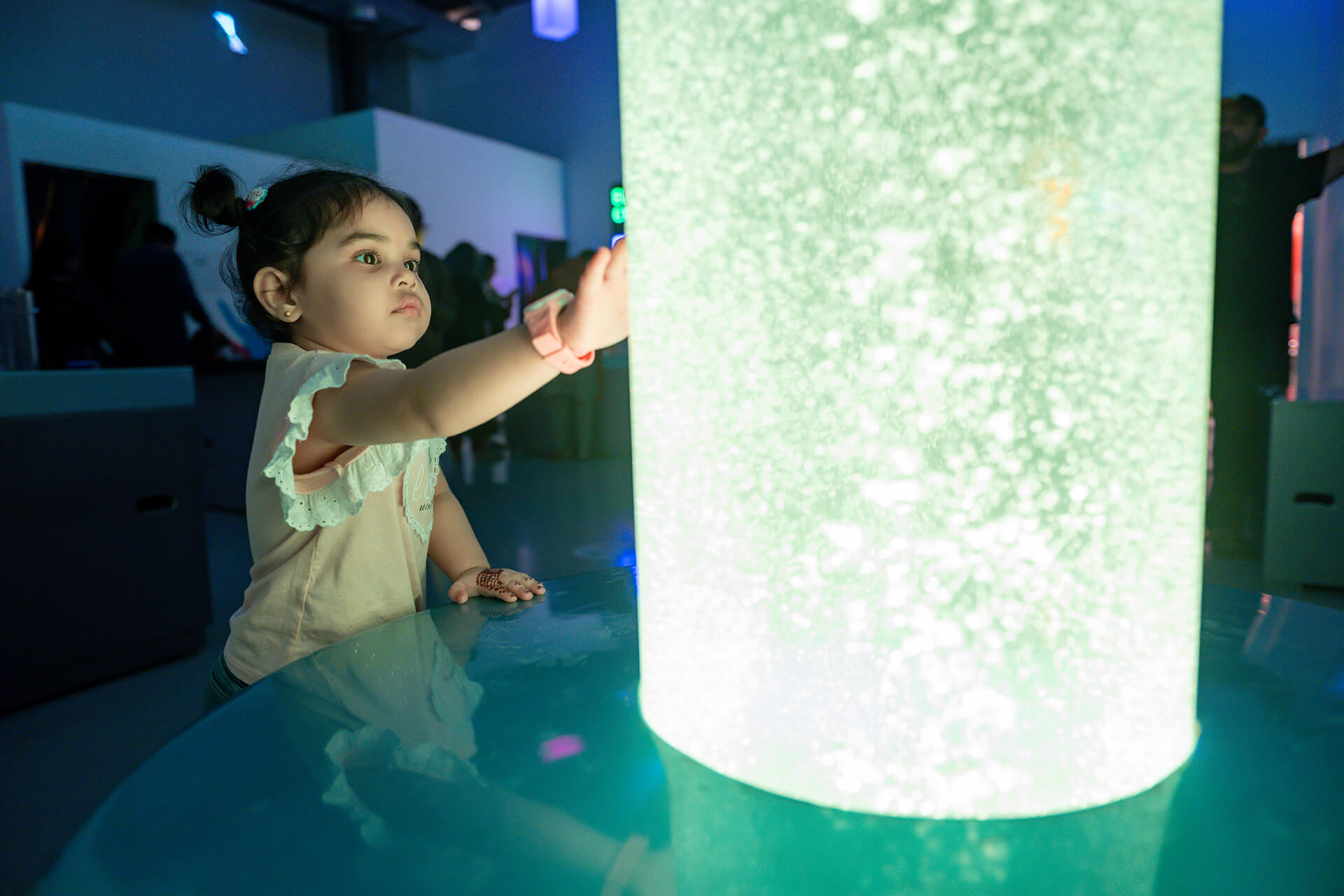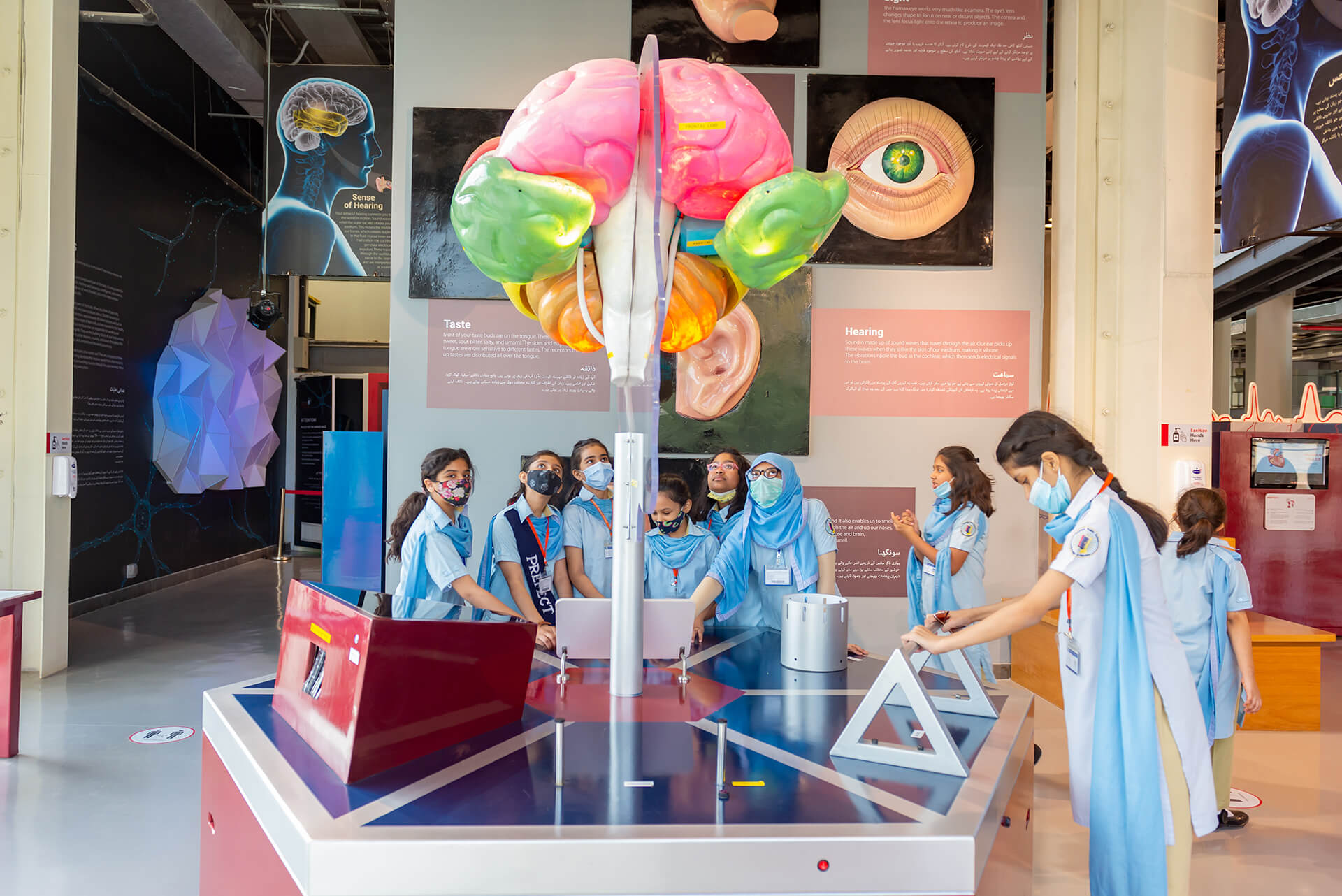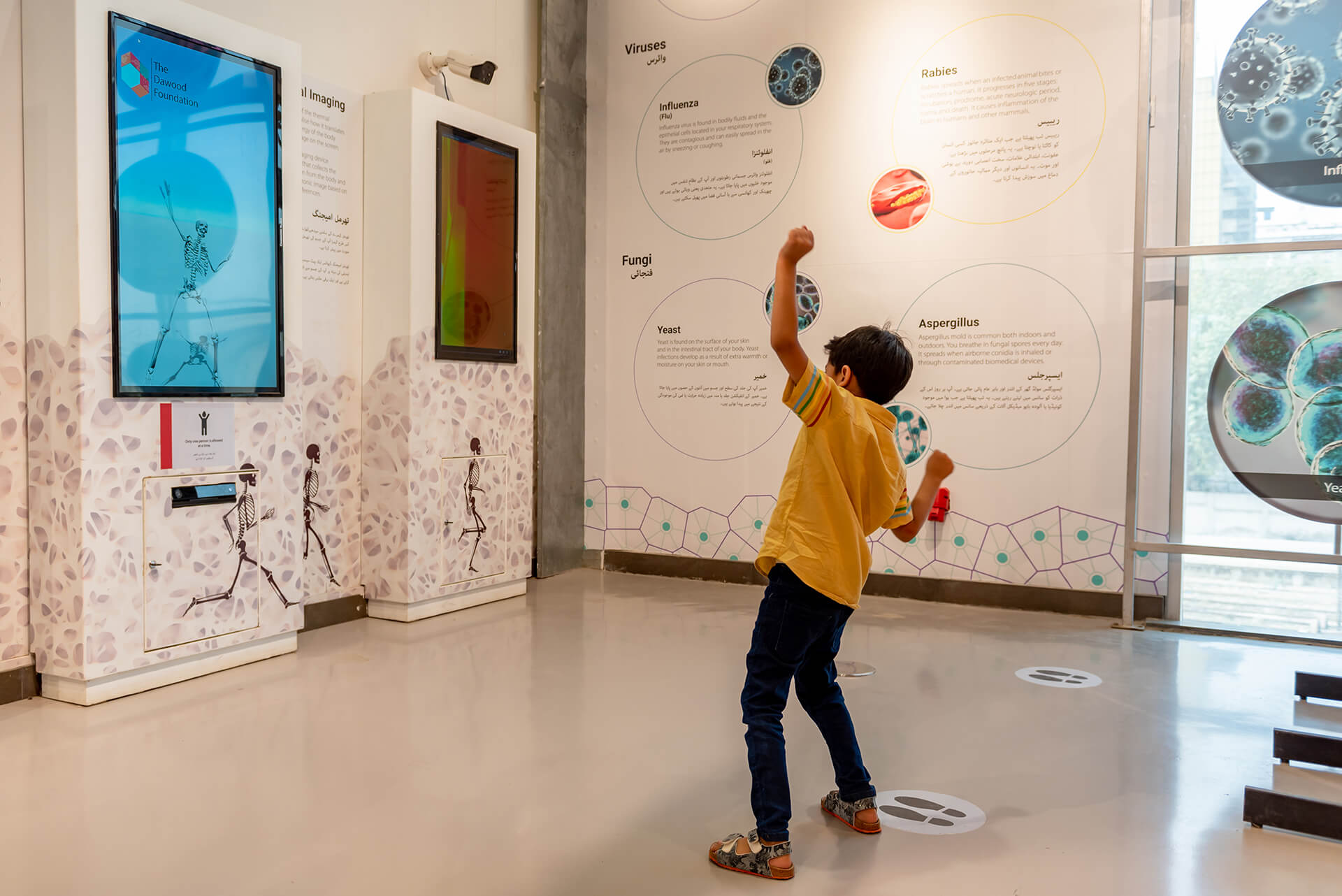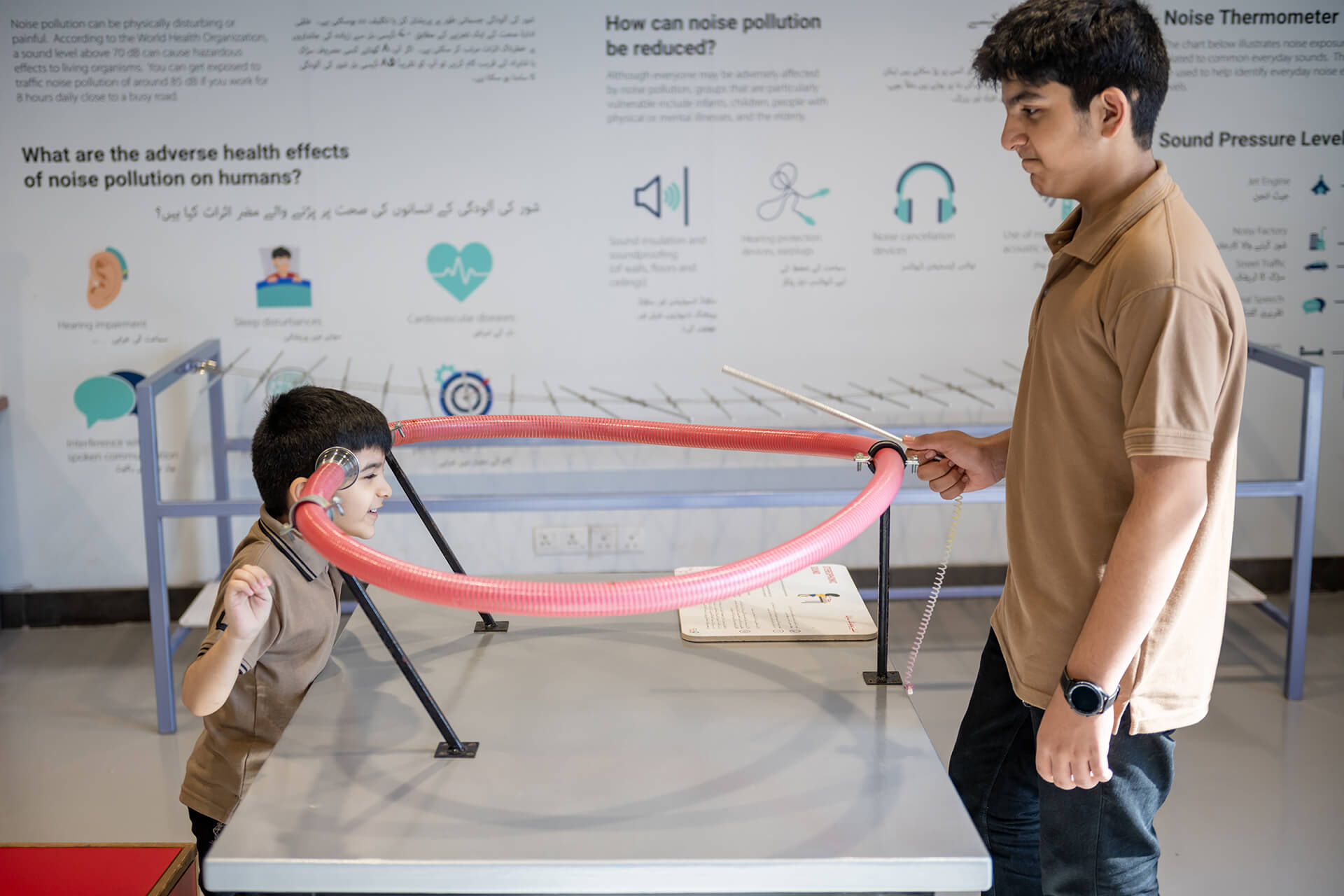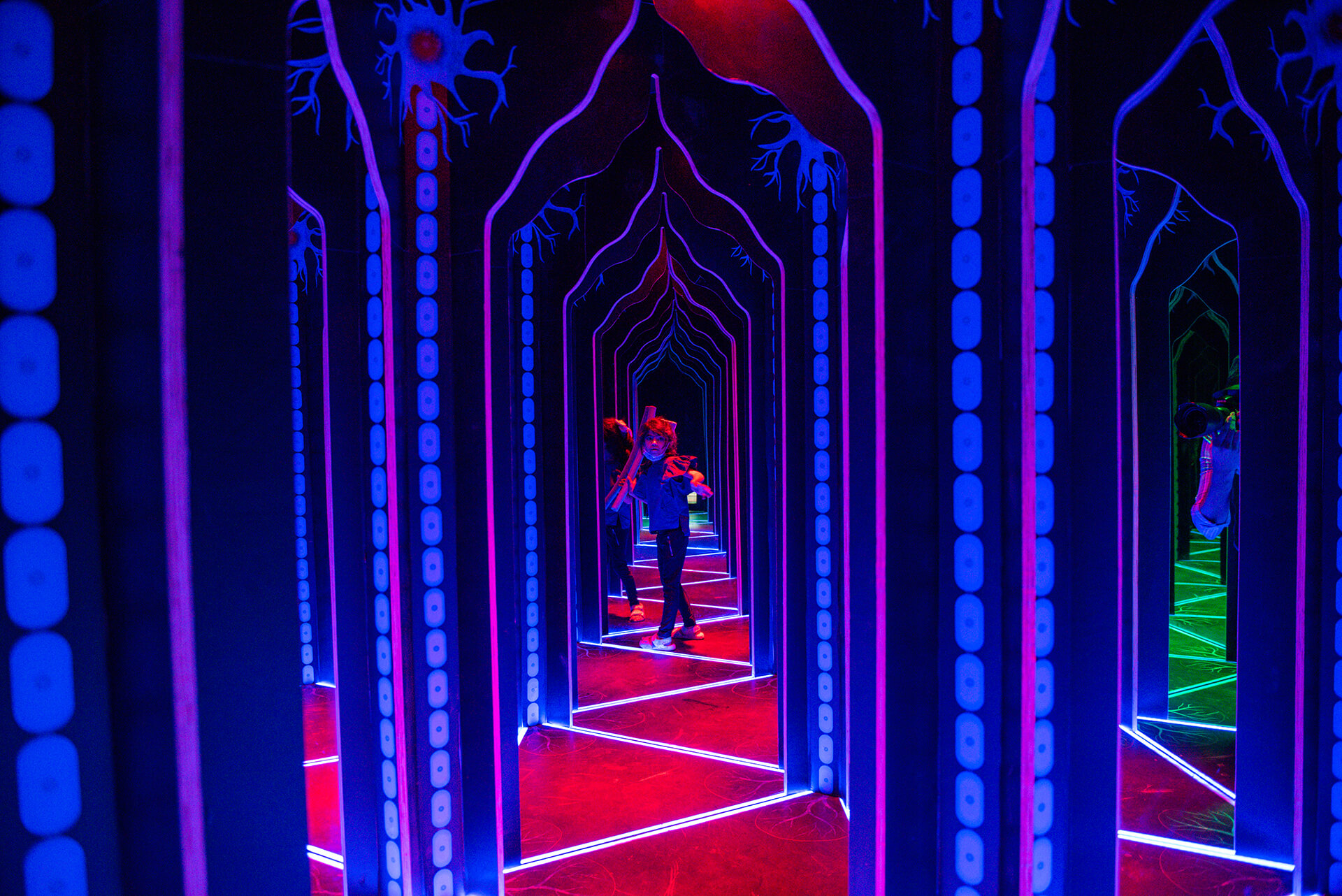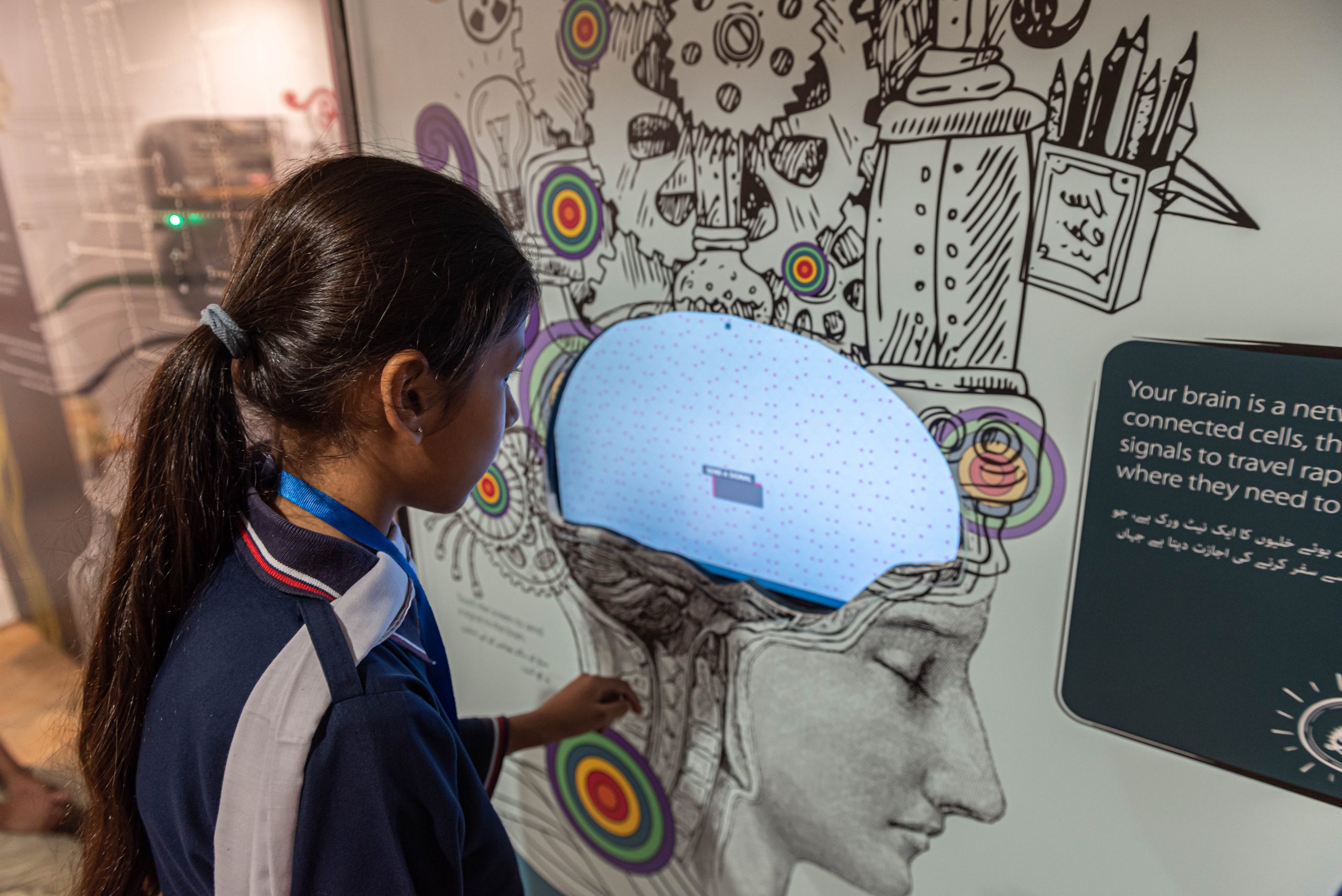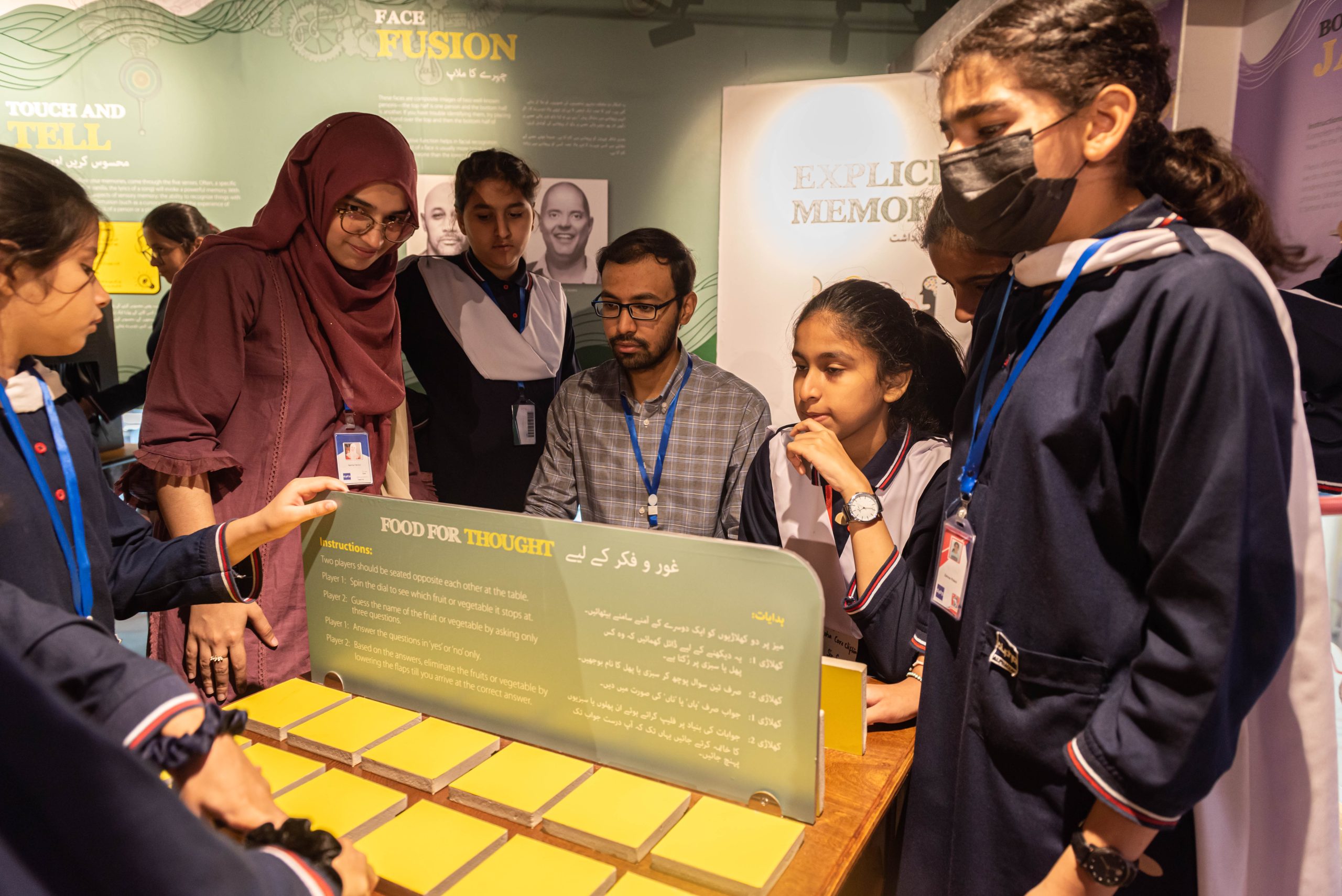The World Within Us
The World Within Us’ is about the science behind human body, sound, light, and illusion.
This floor offers to develop an understanding of internal sensations and the cognitive
processes through which we become aware of the environment. Explore how we receive
information using our five senses and how our brain interprets to form perceptions.
Light
How does light travel? How do we see colours? The exhibits inside the Light room will allow
you to visualize the behaviour and properties of light and understand how it interacts with
matter to detect objects. Learn how light illuminates space and how our brain and eyes
work together to process light signals to form images and visualise different colours.
Human Body
Which part of the brain gets activated upon using any of the five senses? How do our
arteries look if they get blocked? Engage in experiential learning inside the ‘Human Body’
section as you explore the complex internal structures of the human body. Understand how
our senses and different organ systems, like the skeletal system, nervous system, and
cardiovascular system, function.
Seeing is Believing
Did you know that illusions are formed in the brain and not in the eyes? In the ‘Seeing is
Believing’ area, challenge your perception and unravel the mystery of how images may
appear different from reality. Experience the illusion of reduced gravity in the Anti-Gravity
Room, visualize the illusions created by the refraction of light, and understand how our
preconceived notions may influence what we think, do, and see.
Sound
Can you see sound? This space explains the science behind sound and makes creative
connections between science, music, and technology. Through interactive exhibits, learn the
concepts of sound like frequency and pitch and their interrelationship. Visualize, detect, and
identify sound waves and what forces affect their movement.
Sound Lab
Enter the Sound Lab and explore a vast array of traditional and contemporary musical
instruments, ranging from woodwinds, brass, percussion, and strings. Learn about their
classification, origins, and sounds. Visitors can engage in fun DIY music activities involving
the creation of sound-producing instruments using everyday objects.
Brainstorming (1st Floor Mezzanine)
This exhibition presents the way the human brain works, its anatomy, and function in relation to the formation and types of memories. Through interactive exhibits, it is explained how we access our memories and why some memories are easier to retrieve compared to others.
